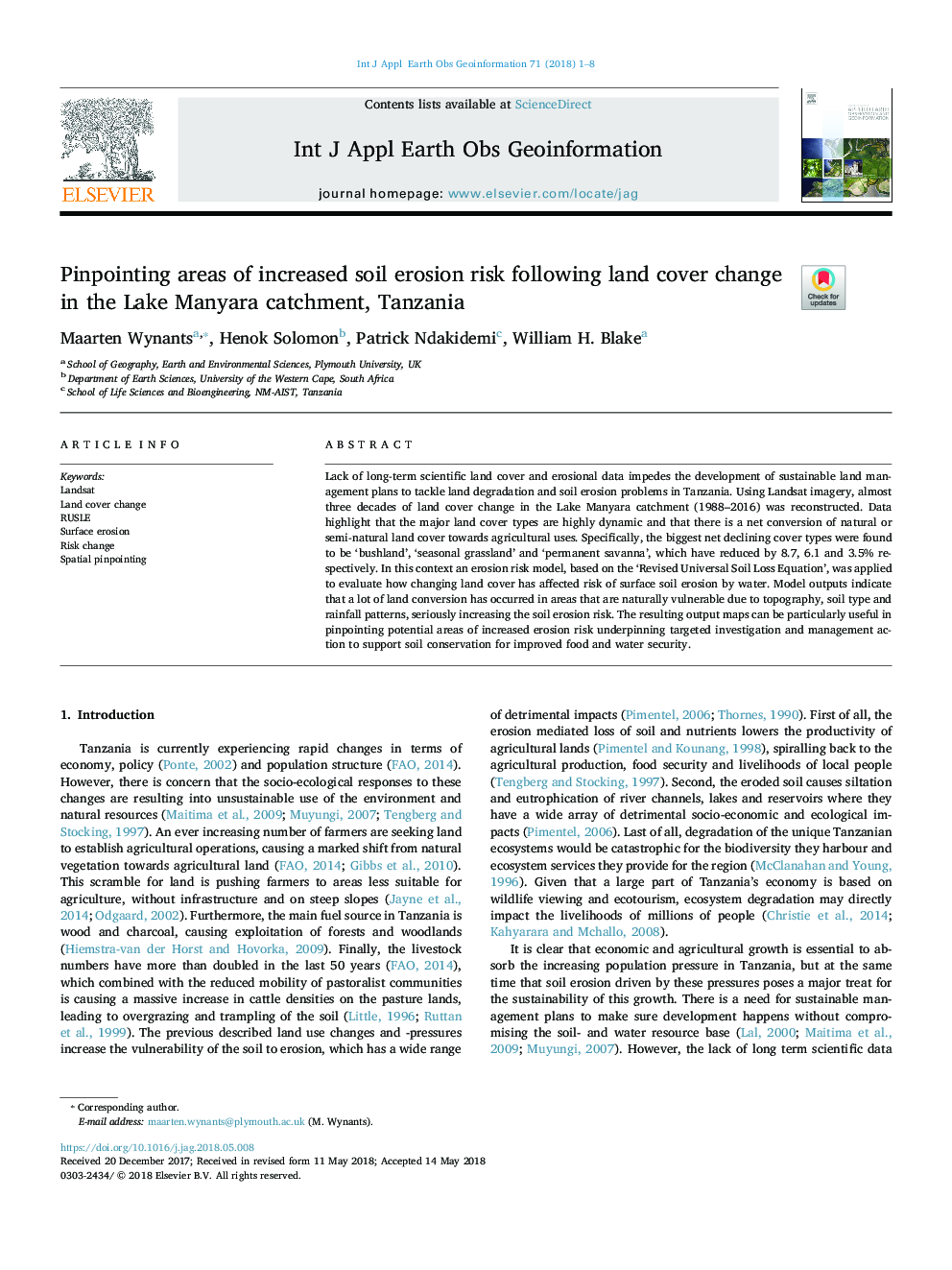| Article ID | Journal | Published Year | Pages | File Type |
|---|---|---|---|---|
| 8867762 | International Journal of Applied Earth Observation and Geoinformation | 2018 | 8 Pages |
Abstract
Lack of long-term scientific land cover and erosional data impedes the development of sustainable land management plans to tackle land degradation and soil erosion problems in Tanzania. Using Landsat imagery, almost three decades of land cover change in the Lake Manyara catchment (1988-2016) was reconstructed. Data highlight that the major land cover types are highly dynamic and that there is a net conversion of natural or semi-natural land cover towards agricultural uses. Specifically, the biggest net declining cover types were found to be 'bushland', 'seasonal grassland' and 'permanent savanna', which have reduced by 8.7, 6.1 and 3.5% respectively. In this context an erosion risk model, based on the 'Revised Universal Soil Loss Equation', was applied to evaluate how changing land cover has affected risk of surface soil erosion by water. Model outputs indicate that a lot of land conversion has occurred in areas that are naturally vulnerable due to topography, soil type and rainfall patterns, seriously increasing the soil erosion risk. The resulting output maps can be particularly useful in pinpointing potential areas of increased erosion risk underpinning targeted investigation and management action to support soil conservation for improved food and water security.
Related Topics
Physical Sciences and Engineering
Earth and Planetary Sciences
Computers in Earth Sciences
Authors
Maarten Wynants, Henok Solomon, Patrick Ndakidemi, William H. Blake,
